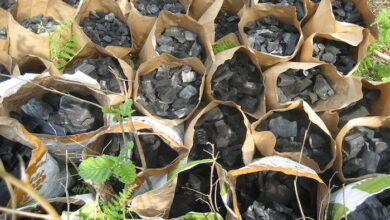
The Secret Under Your Feet: Soil
If you’re new to organic homesteading, you might have the romantic idea that since you are growing food the “natural” way, all you need to do is sow some seeds and Mother Nature will take care of the rest. Sadly, this isn’t true. If you’re planning to turn your yard into a permaculture paradise, don’t waste all your hard work by ignoring a vital step: improving your soil.
You can’t have a healthy garden without healthy soil. If your “foundation” of soil is weak, your garden won’t grow to its full vibrant potential.
But “foundation” isn’t exactly an accurate metaphor, because soil is so much more than a material your plants grow from. Soil is alive, too. In a thriving garden, soil and plants should work together in a web of symbiotic relationships.
It’s good that you’re committed to organic gardening, because organic techniques are the only way to let the ecosystem of soil function the way it should. Synthetic pesticides and fertilizers kill the helpful organisms that live in soil. This leads to disease and starts a vicious cycle of the need for more and more synthetic chemicals.
When you hear “soil organisms,” you might picture nothing more than earthworms. In fact, the organisms in good soil range from rodents all the way down to microscopic bacteria, fungi, and protozoa. If it wasn’t for these little guys, soil couldn’t exist. They do the work of eating organic matter and breaking it down into the nutrients plants need to live.
To cultivate good soil for your organic garden, one of your main goals should be to create a good home for soil organisms. To do this, you must understand the five components of soil. Soil organisms are one component and the other four are:
1. Organic matter. Very important, as this is what soil critters eat. How do you make sure you have enough organic matter? Compost! Make sure the top six inches of your soil has enough well-decomposed compost. Make sure your compost doesn’t contain too many high-carbon “brown materials,” as this can reduce nitrogen for your plants. You can also use manure, but take caution due to the risk of contaminating your produce. Backyard chickens are a great source of nitrogen-rich fertilizer.
2. Water. Both your plants and your soil organisms need to have the right balance of water. Even if it’s not raining a lot now, make sure your garden beds have good drainage to prepare for wet spells. Raised beds are a good option to consider.
3. Air. Don’t suffocate your soil life. Take care to compact your soil as little as possible—never step in your garden beds.
4. Minerals. The size of your soil minerals determines whether your soil is sandy, silty, or high in clay. Mineral size affects drainage and aeration, so adjust the other soil components to compensate for any soil texture problems you may have. Also, just like humans, plants need the proper balance of minerals. If you suspect your soil has a mineral deficiency, the best course of action is to get your soil professionally tested. There are plenty of organic options for supplementing soil minerals.
One important soil test that is easy to do yourself is a pH test. Most plants prefer a soil that is very slightly acidic, a pH of 6.5 to 6.8. If your soil pH is outside of this range, you’ll need to adjust it with organic additives.
One of the best ways to increase the health of your soil is by planting cover crops. Cover crops are planted at the end of season and then tilled in before the next season. They keep your soil healthy, prevent weeds, and depending on the type you choose, they can help restore mineral balances, with nothing more than the magic of nature’s cycles.
For more, please visit, https://sustainabilitybox.com/
Follow The Sustainability Box on Facebook, https://www.facebook.com/Sustainabilitybox/
Originally Published, https://sustainabilitybox.com/secret-feet-soil/
Sources:
https://www.gardeners.com/how-to/building-healthy-soil/5060.html
https://www.motherearthnews.com/organic-gardening/how-to-make-garden-soil
https://www.drweil.com/health-wellness/balanced-living/gardening/how-to-make-healthy-soil/












